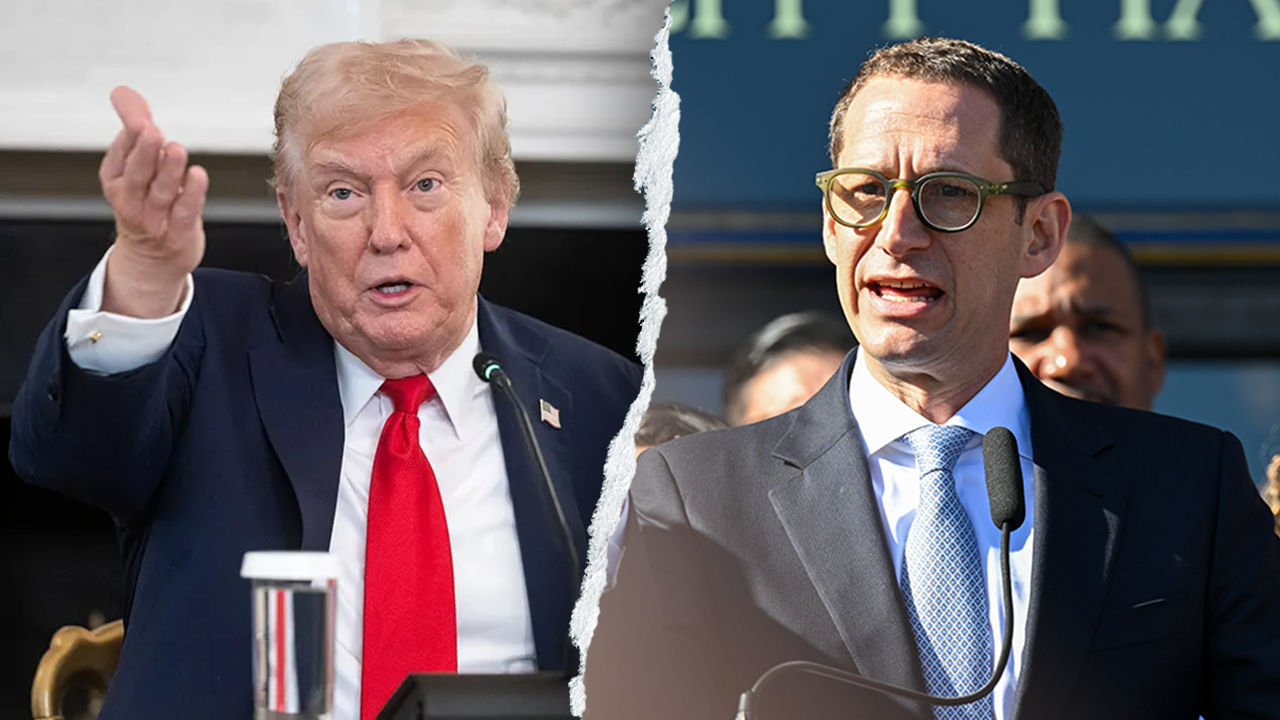Copyright Investing.com

Trump’s one-year rare earth truce with China looks like relief. For investors chasing the diversification story, it might be an expensive distraction. When President Trump returned from his October 30 meeting with Xi Jinping, calling it a "12 out of 10," markets barely flinched. US stock futures held flat. China’s actually fell 0.8%. That muted response tells you everything: experienced investors know a one-year pause isn’t the same as a solution. Yet retail investors are still piling into rare earth stocks. VanEck Rare Earth and Strategic Metals ETF (NYSE: ) has surged 77% year-to-date, hitting $1.31 billion in assets. MP Materials (NYSE: ), America’s only integrated rare earth producer, has rocketed 292% in 2025. The story is seductive: China controls the supply, the West is building alternatives, get in early. Here’s the real problem: that timeline everyone’s ignoring? It’s about to separate winners from bag-holders. The Decade Nobody Wants to Talk About The rare earth industry has a problem that gets buried in press releases about new mining projects: real supply chain independence won’t arrive until the mid-2030s, regardless of how much money Washington throws at the problem. China doesn’t just mine rare earths. It controls 90% of processing capacity and 93% of magnet manufacturing. Finding new mines is the easy part. Australia, Canada, and the US have plenty of rare earth deposits. What they don’t have is the chemical separation facilities, the metallurgical expertise, or the magnet factories that China spent 30 years building. "Even with ambitious projects underway, non-Chinese separation capacity will likely reach only 25-30% by 2027," according to recent supply chain analyses. Magnet manufacturing? It’ll stay below 20% through 2028. Translation: for the next three to five years, minimum, the West remains almost entirely dependent on Chinese rare earth processing. Trump’s one-year deal doesn’t change that math. It just puts it on a calendar. The Annual Hostage Situation Here’s where the investment thesis gets dangerous. By agreeing to review the rare earth truce annually, Trump didn’t neutralize China’s leverage. He institutionalized it. Every October, Beijing now gets to decide whether to turn the supply spigot back on. Every year, American manufacturers, defense contractors, and tech companies have to sweat whether their rare earth supplies continue. And every year, that uncertainty will hammer stock valuations for companies caught in the middle. Scott Kennedy at the Center for Strategic and International Studies put it bluntly: "Xi has created more safe space for China’s economic system." By threatening massive export restrictions, getting the US to back down, then agreeing to a renewable one-year pause, China established a playbook it can run indefinitely. For investors, this creates an unusual risk profile: companies promising rare earth independence might be worth less, not more, if China decides to flood markets with cheap supply next October to undermine Western competitors. China dominates every step of the rare earth supply chain: controlling about two-thirds of mining, 90% of processing, and 93% of magnet manufacturing. This deep vertical integration means non-Chinese miners remain dependent on China for critical steps and technology, and even successful mining projects in Australia and North America will struggle to achieve independence without also building manufacturing capacity. The Heavy Rare Earth Crisis You’re Not Hearing About Most investors lump all rare earths together. That’s a mistake that could cost you. "Heavy rare earths" (particularly dysprosium and terbium) face China’s tightest stranglehold at nearly 99% of processing capacity. These aren’t optional materials. Every F-35 fighter contains 427 kilograms of rare earth materials. High-performance electric vehicle motors need dysprosium to maintain magnetic strength at high temperatures. Wind turbines require terbium for efficiency. After China imposed export licensing in April 2025, dysprosium and terbium exports dropped to zero in May. By July, European prices had nearly tripled while Chinese domestic prices held steady, a clear example of weaponized supply control. The US Department of Defense is scrambling to stockpile these materials, allocating $100 million for dysprosium and terbium purchases. But here’s the catch: America’s entire national defense stockpile contained less than one metric ton of dysprosium as of 2022. Annual military demand alone approaches 400 metric tons. Companies focusing on heavy rare earth supply (not just generic rare earth mining) deserve premium valuations. The market hasn’t fully priced in this distinction yet. The Mining Project Trap When a company announces a new rare earth mining project, retail investors often rush in. Don’t be that investor. Look at the timeline graveyard: projects announced for 2026-2027 completion routinely slip to 2028-2030 once permitting, financing, and technical challenges materialize. Rare earth processing is chemically complex, generates toxic waste, and requires specialized expertise that barely exists outside China anymore. The economic trap is worse. China can crash rare earth prices through oversupply whenever it wants, making Western projects uneconomic overnight. That’s exactly what happened in the 2010s, killing multiple US rare earth ventures. This is why the US government is now guaranteeing demand and setting price floors. MP Materials secured a 10-year Pentagon supply agreement at $110/kg minimum, essentially taxpayer insurance for investors. Without similar government backing, mining projects face serious risk. Investment rule: Avoid greenfield rare earth projects without government contracts. You’re betting on execution risk plus Chinese goodwill. That’s more gambling than investing. The Recycling Story Nobody’s Watching While mining companies grab headlines, rare earth recycling represents the overlooked opportunity. Currently, less than 1% of rare earths get recycled globally, despite urban waste containing concentrations that often exceed natural ore deposits. New hydrogen-based recycling technologies can process end-of-life magnets into high-purity rare earth powders in 12-24 months, far faster than the 7-10 years needed for new mines. Cyclic Materials is building North America’s first rare earth recycling center in Ontario, converting 500 tonnes of magnet-rich feedstock annually starting Q1 2026. That’s actual near-term supply that doesn’t depend on Chinese processing. Companies like CoTec Holdings (developing hydrogen-based magnet recycling) and Ionic Rare Earths (focusing on heavy rare earth recycling in the UK) offer exposure without mining execution risk. The market largely ignores them because the stories aren’t as sexy as finding new deposits. That’s an opportunity, if you’re willing to look past the headlines. Rare earth demand will triple by 2035, but non-Chinese supply growth will lag, causing a persistent global shortfall. Even with new mining and recycling projects, supply is projected to fall 30% below demand, prolonging global dependence on China for the decade. This illustrates why the one-year agreement essentially buys time rather than solving structural vulnerabilities: the demand trajectory is simply too steep for supply alternatives to match within the decade timeframe, regardless of investments announced today. What Actually Works: A Reality-Based Strategy For investors who want rare earth exposure without getting burned, here’s what the data actually supports: Tier 1: Government-Backed Producers MP Materials and Lynas Rare Earths have operating facilities, government support, and actual revenue. Yes, they’ve run up significantly. But Department of Defense contracts provide downside protection that speculative miners lack. Tier 2: Recycling Plays Early-stage recycling companies with proven technology and secured feedstock. These operate on 2-3 year timelines versus 7-10 years for mining. Tier 3: Defense Contractors With Heavy Rare Earth Exposure As heavy rare earth shortages bite, companies that successfully reduce dysprosium and terbium consumption in their products gain competitive advantages. Look for advanced magnet efficiency technologies. Avoid: Chinese Producers Despite strong fundamentals, Western governments are actively trying to reduce dependence. You’re betting against stated policy across the US, EU, and Australia. Avoid: Greenfield Mines Without Government Backing The execution risk alone disqualifies most projects. Add Chinese price manipulation capability, and the risk-reward doesn’t work. The One-Year Reckoning Trump’s rare earth truce expires in October 2026, just in time for US midterm election season. That timing isn’t coincidental. Beijing knows American politicians need visible wins. For investors, this creates a predictable volatility cycle. As each October approaches, rare earth supply anxiety will spike. Companies without diversified supply chains will face uncertainty premiums. Those with government backing and actual production will capture flight-to-quality flows. The smart play isn’t chasing the diversification narrative wholesale. It’s identifying which companies have government support, technical execution capability, and timeline realism to survive the next five years of annual negotiations. Because here’s the truth Trump won’t say out loud: America’s rare earth independence is a 2030s story. Between now and then, we’re living in China’s one-year subscription plan. The investors who understand that timeline (and position accordingly) will profit from those who don’t. The companies mentioned are for illustrative and do not constitute investment advice. Investors should conduct their own due diligence before making investment decisions.



